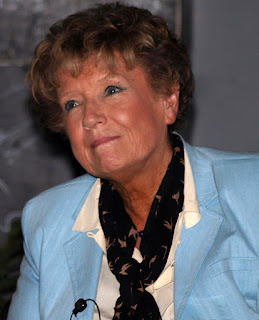Long career of a feminist novelist and playwright
 |
| Dacia Maraini spent part of her childhood as a prisoner in wartime Japan |
An Italian writer who is widely recognised abroad, Dacia Maraini is also a respected critic, poet, journalist and playwright. She established la Maddalena, the first Italian theatrical group composed exclusively of women.
The themes of limitation and oppression in Maraini’s writing have their roots in her childhood years, which she spent in a concentration camp in Japan. She then went to live in Sicily, which she has also described as an oppressive setting.
Her writing expresses the concerns of the Italian feminist movement, focusing on issues such as abortion, sexual violence, prostitution and the mother/daughter relationship.
Many of her works are autobiographical and are written in the form of diaries and letters.
Maraini lived with the writer Alberto Moravia from 1962 until 1983 and was a close friend of Pier Paolo Pasolini and Maria Callas.
She was the daughter of Sicilian princess Topazia Aliata di Salaparuta, who was an artist, and Fosco Maraini, a Florentine ethnologist.
When she was still a young child, Maraini’s family moved to Japan to escape Fascism in 1938. They were interned in a Japanese concentration camp from 1943 to 1946 for refusing to recognise Mussolini’s Republic of Salò.
 |
| Dacia Maraini's novels have won her several prestigious literary prizes |
Maraini was educated at a boarding school in Florence. After her parents separated and her father moved to Rome, Maraini joined him when she was 18.
She married Lucio Pozzi, a Milanese painter, but they separated after four years. She then met Moravia, who became her long-term partner.
In 1966 she formed a theatre company with Moravia to put on new Italian plays, including her own works. This led to her founding Teatro della Maddalena, for women only, a few years later. Maraini went on to direct films, write screenplays and also to appear in films.
She became a prolific writer, having produced her first novel, La vacanza, in 1963. Forty years later, her novel Chiara di Assisi – Elogio della Disobbedianza, was published in 2013.
Maraini has won many literary prizes, including the Fregene prize in 1985 for her novel, Isolina, and the premio Camiello in 1990 for her historical novel, la Lunga Vita di Marianna Ucria.
She celebrates her 84th birthday today.
Travel tip:
Fiesole's cathedral is said to have been built
on the site of the martyrdom of St Romulus
Fiesole, a town of about 14,000 inhabitants situated in an elevated position about 8km (5 miles) northeast of Florence, has since the 14th century been a popular place to live for wealthy Florentines and even to this day remains the richest municipality in Florence. Formerly an important Etruscan settlement, it was also a Roman town of note, of which the remains of a theatre and baths are still visible. Fiesole's cathedral, built in the 11th century, is supposedly built over the site of the martyrdom of St. Romulus. In the middle ages, Fiesole was as powerful as Florence until it was conquered by the latter in 1125 after a series of wars.
Travel tip:
The Villa Palagonia is a great example of
Baroque architecture in Sicily
Bagheria, where Maraini lived with her family in Sicily, was the subject of her book, Bagheria, published in 1995, which condemns the destruction of Sicily’s artistic and architectural treasures in its transition into a modern city. From the 17th century, when Giuseppe Branciforti, Prince of Butera and former Viceroy of Sicily, built a large villa there, the area, about 10km east of the centre of Palermo, became a preferred location for the vacation homes of the city’s elites. The Villa Valguarnera and Villa Palagonia, both designed by the architect Tommaso Napoli, were two of the most striking Baroque residences, while the Villa Villarosa were built on more neoclassical lines. Unregulated building in the 20th and 21st centuries has rather diminished the town’s former splendour.
Also on this day:
1868: The death of composer Gioachino Rossini
1907: The birth of Princess Giovanna of Italy - Tsaritsa of Bulgaria
1914: The birth of film director Alberto Lattuada




